Why Do So Many Modern Female Video Game Characters Look Androgynous Or Downright Manly?
Video games aren’t realistic.
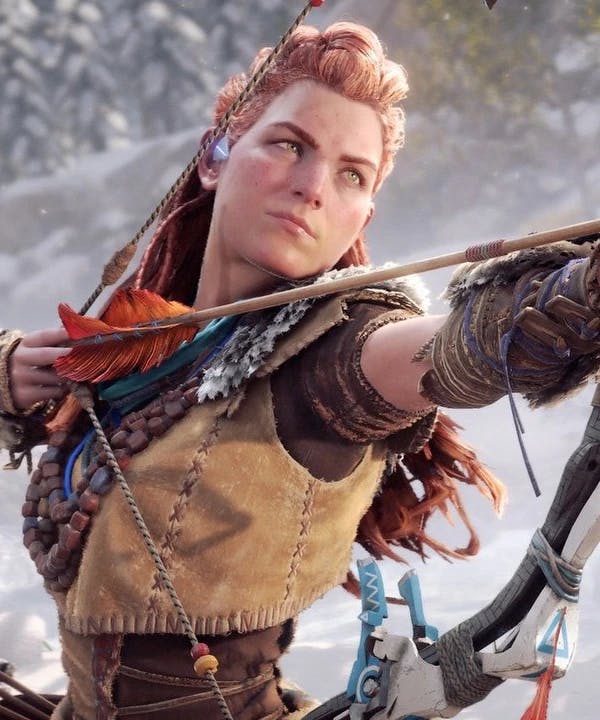
Phew, okay, now that I’ve gotten my disclaimer out of the way, we need to chat about what’s going on with female characters in video games looking androgynous at best and, honestly, kind of like a dude at their worst.
Whether you’re a gamer yourself, you casually play the occasional round of Mario Kart or Smash Bros. with your boyfriend, spouse, or friends, or you’re just a conscious observer of media, I’m sure that you’ve noticed an aesthetic shift away from idealized fantasy toward gritty realism.
There’s nothing wrong with wanting a bit more truth in representations of body types, since we can’t all be naturally blessed with sculpted legs, perky bums, snatched waists, and big boobs, but lately the push to bring a more balanced design and role to modern female video game characters appears to have backfired.
In an effort to not get canceled, many video game developers post-GamerGate are nixing the damsel in distress trope and giving powerful, masculine roles to female characters. The only problem is it really doesn’t feel authentic, and instead reveals just how much some people will try to erase true femininity.
This All Started with GamerGate
Don’t get me wrong – I’m not trying to beat a dead horse or give my full two cents on the issue since there’s already a body of literature critiquing the movement. That being said, there is proof not only of correlation but also causation for this defeminization of women in video games being the result of GamerGate. And plenty of the leaders in that movement celebrate it.
GamerGate refers to longstanding online drama in the video game community around claims of misogyny and sexism coupled with a push for social justice within the video game industry. The controversy grew so big – beyond just internet forums and gaming journalism – that it garnered coverage nationwide and eventually made its way into academia. This movement has actually had a very real impact on ethics reform in the gaming industry, with developers showing a more conscious effort to reduce what some would consider misogyny in their games’ story, theme, and design.
Male and female feminists in the GamerGate movement felt aggravated by “damsel in distress” tropes and “Ms. Male” characters. Let’s be honest, some of the “damsel in distress” characters do feel pretty weak, like Princess Peach from the Super Mario Bros. universe, Daphne from Dragon’s Lair, Princess Elise from Sonic ‘06, and Pauline from the Donkey Kong universe.
Feminists in the GamerGate movement felt aggravated by “damsel in distress” tropes and “Ms. Male” characters.
There’s also a point to be said about why “Ms. Male” characters could be perceived as dishonorable representations of women. Think Ms. PAC-Man from the PAC-Man universe, Dixie Kong from the Donkey Kong universe, or Amy Rose from the Sonic the Hedgehog universe – they only exist because of and in relationship to their male counterparts.
Strong voices against these tropes continued to put pressure on the industry, and in response, the industry has attempted to fix the problems. Unfortunately, the pendulum has begun to swing to the opposite end of the spectrum with deliberately de-feminized female characters who exist solely to fill male roles.
Women in Video Games Are Being Dishonorably Portrayed
There’s a lot to unpack, but the best place to start is where some of this trickles into games aimed at both male and female audiences like Life Is Strange. The two main characters, Max Caulfield and Chloe Price, embody the alternative fashion trends that came out of Tumblr in the 2010s.
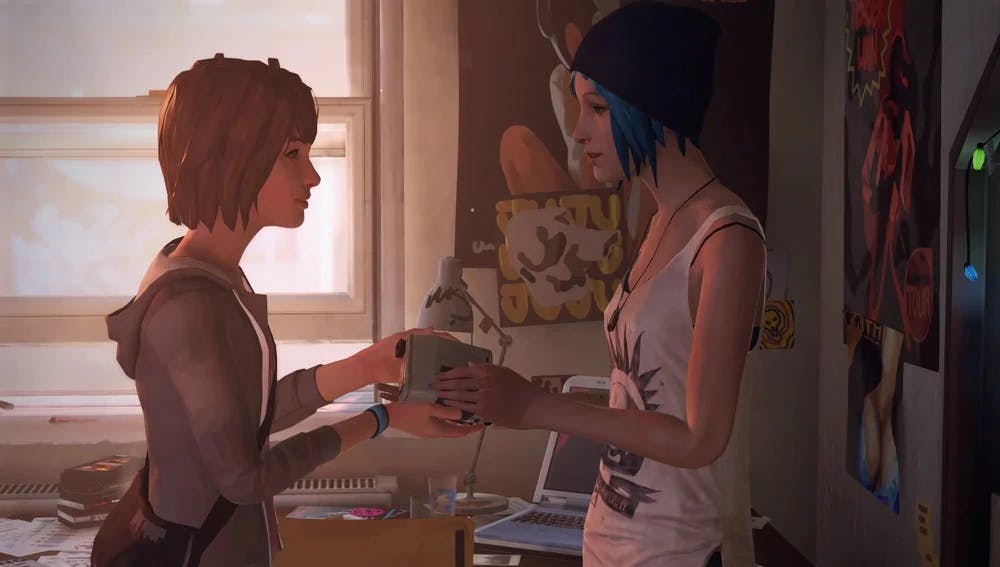
Max and Chloe in Life Is Strange
Oftentimes throughout the game’s script, Max and Chloe are putting down male scapegoat characters and using strawman arguments against living in an America that’s unaccepting of their coming-of-age romance. Everyone else in the universe seems to be bumbling idiots to Max and Chloe.
Then you journey into games that are a bit more directed at male audiences, like the adventure RPG The Last of Us. When looking at Ellie as an example, gamers noticed that she went from being a cute young girl to looking...well, much worse.
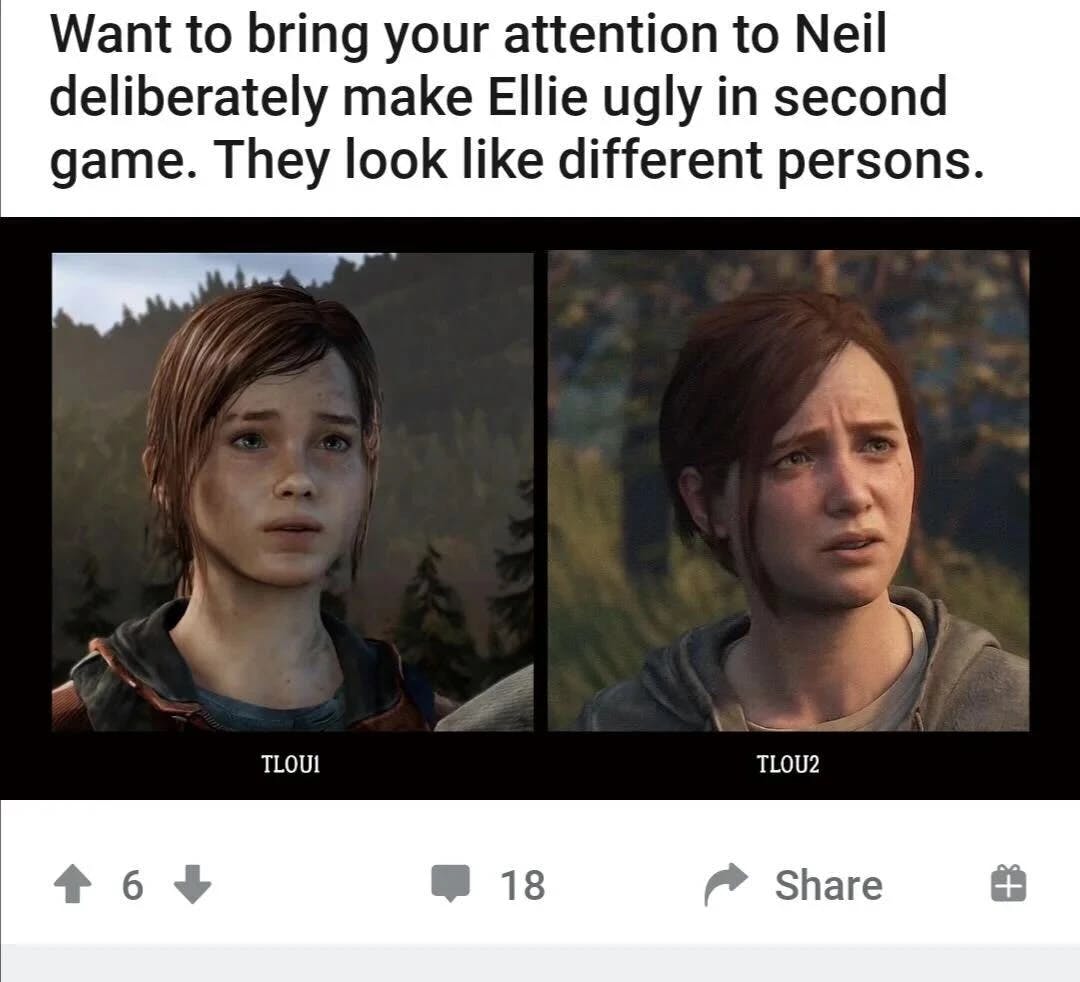
Abby, who is extremely buff in a zombie era that probably doesn't have steroids on hand, looks so manly that countless memes have been made about the situation, even before the game's release.
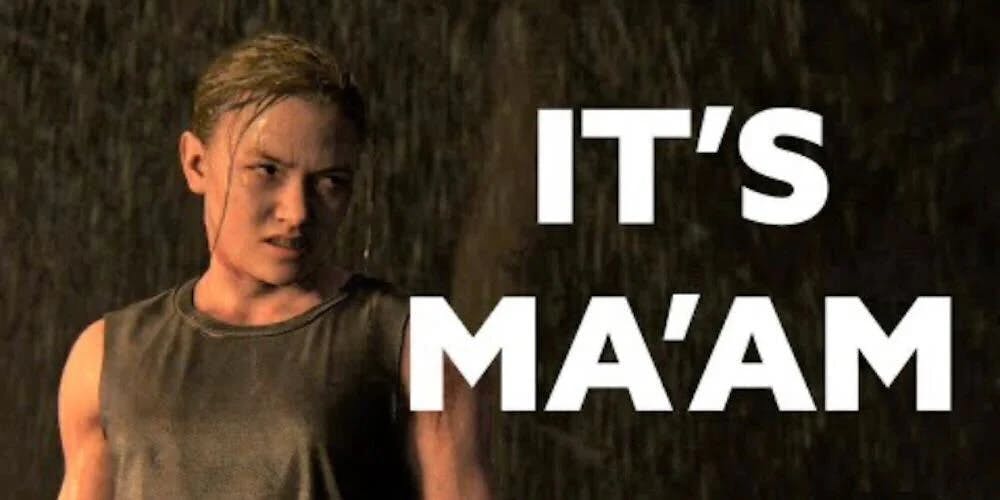
In fact, it's almost like it was Naughty Dog's plan all along. When you play TLOU2, Ellie is really boring to play (aside from in flashback scenes). Then you have Abby, who is unable to hurt a dog, saves a trans kid, and is actually really fun to play to try to make you forget the fact that she killed the man who saved her life with a baseball bat. I get that there probably aren't tons of hotties in a zombie apocalypse, but the actress whose face they used for Abby was actually pretty, so they uglified her.
And that's not the only time that's happened. Danish actress Hannah Hoekstra shot into the media’s attention for her role as the model for the Horizon Forbidden West character Aloy. Only problem is, Hannah is a bonafide beauty, but the character that was modeled after her removed any of her feminine charm. Compared to Hannah’s likeness as Aloy in the first game, Horizon Zero Dawn, the new game made her plainer, dulled her cheekbones, changed her jaw and nose shape.
Now Aloy in Horizon Zero Dawn didn’t have your standard Victoria’s Secret model’s visage, but she did better resemble the actual actress and her natural beauty traits. Online banter surrounding the controversy was heated between one side that wished Aloy’s design had stayed true to its origins while the other side celebrated the warrior woman’s new look. Let’s be honest, if she were a warrior woman, I doubt her body fat percentage could justify how puffy those new cheeks are.
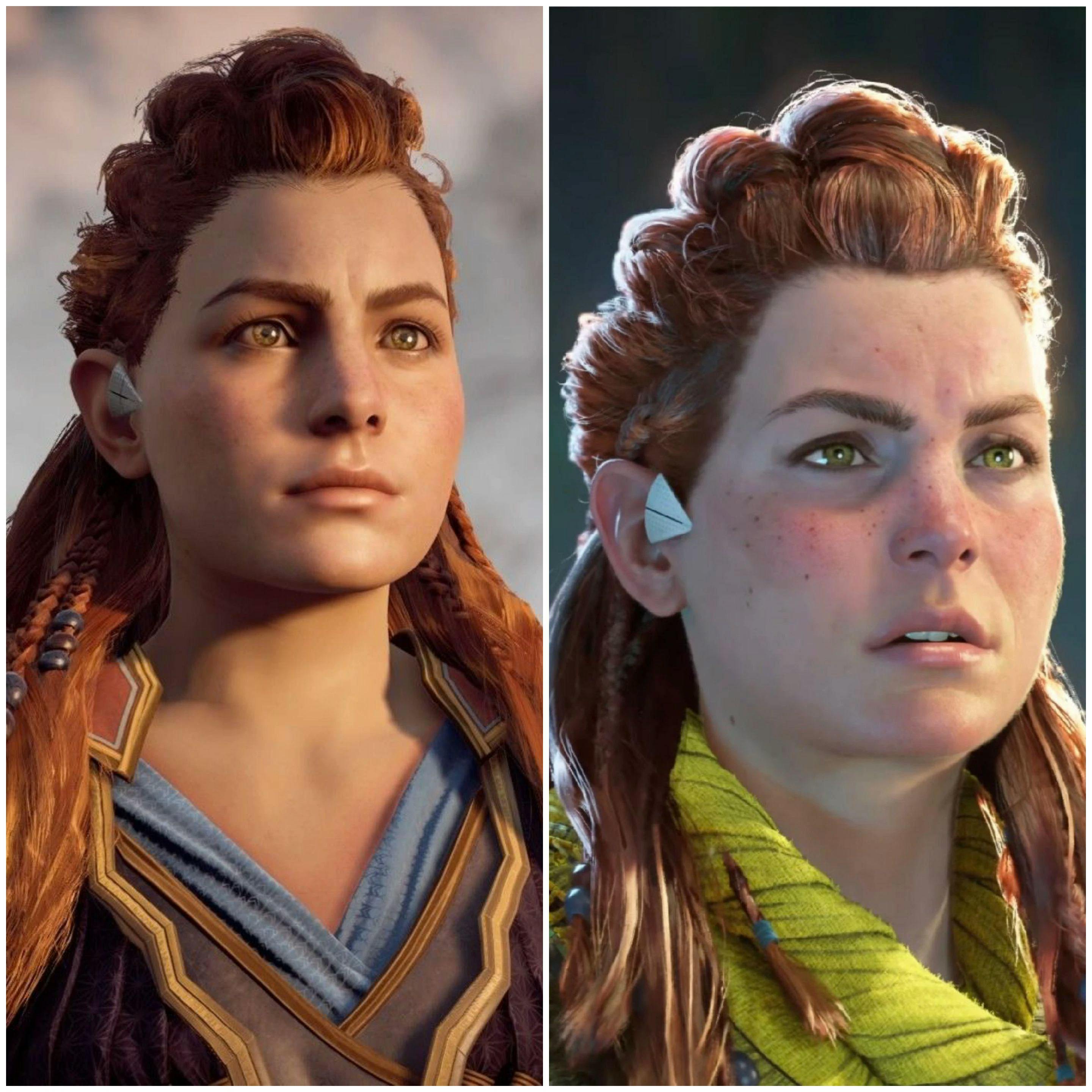
Aloy from Horizon Zero Dawn and Horizon Forbidden West
What it boils down to – and this is definitely not the first instance of it – is that there was a deliberate shift, a purposeful change in character design to lessen the character’s original, feminine features in order to solve what some consider a lack of representation in video games.
Action RPGs in recent years are the most guilty of this. Between Mass Effect: Andromeda, Assassins Creed: Valhalla, God of War, and countless more, there’s an unsurprising amount of female characters being given the de-sexed treatment. Maybe their facial physiognomy more closely resembles masculine bone structure, maybe they have boxier figures, or maybe they’ve been given a buzzed, cropped, and colored hairdo that I think I’ve seen on most individuals who call their gender non-binary.
It’s awful already and only appears to be getting worse. Take a look at all of the women in the God of War series. No, women warriors shouldn’t be dainty, but the God of War developers made them basically just men with attitude. Or with the Mass Effect series, where character Sara Ryder from Mass Effect: Andromeda appears to have been made deliberately more masculine despite being modeled after a very feminine model, Jayde Rossi.
What’s particularly egregious about Sara Ryder’s design choice is that the playable character from Mass Effect, Commander Shepherd (which can be either female or male), is a great example of a powerful, one-woman army character, and designers kept her decidedly feminine in appearance regardless. It makes you wonder why the series chose to move in the Sara Ryder direction.
Overall, the portrayals of women that consumers are being fed are becoming more disloyal to women and femininity. She doesn’t have to be a femme fatale, but a female video game character shouldn’t slowly become more man-like with each installment. So why does it seem like the modern female character is a man?
We’re Letting This Be Normalized on the Big Screen Too
Without a doubt, societies worldwide have come a long way in providing women more equal footing whether that's in their own workplace or in their media representations in video games, cinema, or television. At the same time, there’s a strong push to throw away the feminine essence and make women act like men in order to gain respect for their characters or gain viewership in the era of cancel culture.
Tying video games and the film industry together is the case of Lara Croft, who was insanely sexy in her design. Throughout the years, video game Lara Croft’s pointy bosom has deflated significantly, along with the screen recast from curvier Angelina Jolie to leaner, more athletically-built Alicia Vikander.
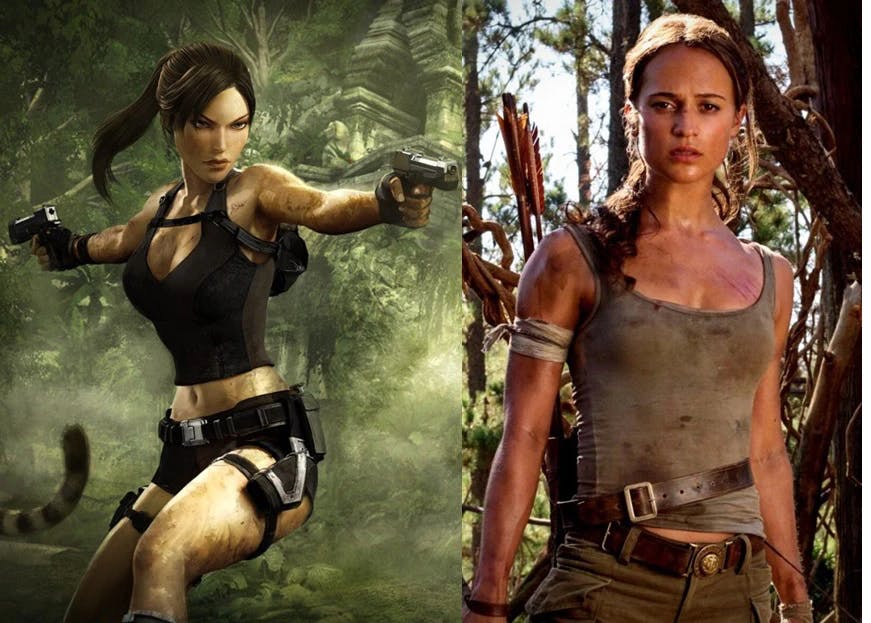
The message that backfires is unfortunate: in order to be a strong woman, you can't be pretty or feminine.
Why Do We Have To Pick Between “Damsel in Distress” or Reject the Narrative Outright?
Have you noticed that Lara Croft’s recent character reboot feels awfully similar to Rey from the new Star Wars trilogy? What do you know, they also both have Mary Sue characteristics with ridiculous levels of strength. You may have seen a few other, often leather-clad, lady leaders in cinema lately who appear to have unbridled physical abilities like Black Widow or Agent Carter from the Marvel Cinematic Universe.
I don’t know about you, but as a woman who does strength training and is often the outlier in the weight room, I know that no matter how hard I try, my muscle and might will never match up to that of a man. Don’t get me wrong, I’m still a very strong individual, but I’m “woman strong.” Why that fact has to be controversial is beyond me; there’s nothing wrong with being humble and admitting biological truth.
Women don’t have to be invincible to be strong.
One of the most troubling parts of this heavy-handed push for female characters in movies and similarly in video games to be identical to men in strength is that they garner high praise for being inclusive, even if their character is rudimentary at best or full of tropes at worst.
What do ladies like Ellen Ripley from the Alien franchise, Sara Connor from the Terminator franchise, and the Bride from the Kill Bill franchise all have in common? They’re strong, badass female characters that still have flaws. Flaws that lead them to get their butts kicked…but they also still kick butt in their own ways. Characters like these give a more positive depiction that women don’t have to be invincible to be strong.
It’s Not That Bad When You Look Outside America
On the other side of the coin is the Eastern video game industry, which could warrant its own entire discussion, but is relevant to this problem in that the female representation tends to be more honest. They're beautiful, kind, and still strong. Think of almost any female character from the Fire Emblem universe, Makoto Nijima from Persona, Aeris Gainsborough from Final Fantasy, and countless others.
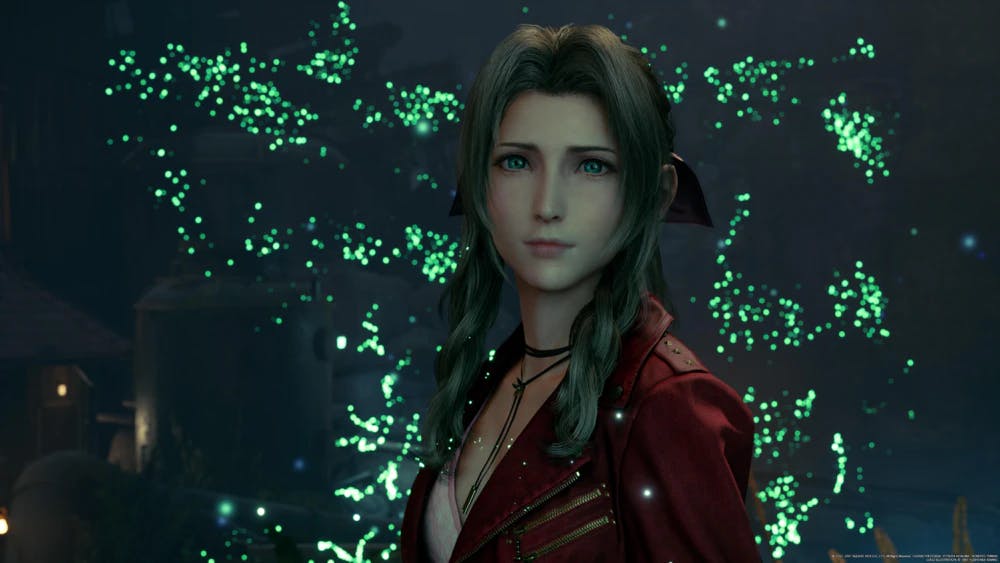
Aeris Gainsborough from Final Fantasy
The developers of these games found a way to marry feminine virtues and strengths like being nurturing, healing, or caring without being a stereotype or trying to make a political statement. These female characters don’t need to sacrifice female attributes like their personalities or appearances in order to be hunters, clerics, skilled hunters, you name it.
There’s no doubt at all that many Eastern game developers will deliberately make their female characters extremely sexy to play into the male gaze. However, for what it’s worth, a lot of these femme fatales actually use their sexuality to distract or defeat enemies in games, like Bayonetta from the Bayonetta series or Poison from the Street Fighter universe.
What do you know, Eastern game developers never gave into the GamerGate agenda.
Does My Identity Need To Be Visible for Me To Enjoy a Piece of Media?
The truth is that both game developers and those pressured by the media’s trend to increase female visibility in their content simply insert women into their stories to solve real world problems. Real world women then see these fantasy stories and end up feeling more excluded because of how polarizing their depictions are. It’s either damsel or daredevil.
Giving a woman a man's role doesn’t achieve anything; you still have a problem of a lack of true feminine presence in fantasy. What’s the lesson to be learned when you take the knight in shining armor and stick a woman in his armor? There’s no lesson, there’s no real representation…you’re just telling a man’s story, but the man happens to maybe have long hair and a curvy figure. Actually, probably not even that.
Closing Thoughts
Because of how poorly the issue of female representation in video games has been handled, the games that end up appealing to me, and anecdotally many women I speak with, are the ones that don’t even touch on realism. It comes without shock that game franchises like Kirby, Yoshi, or Animal Crossing get girl gamers drawn in since they don’t address social issues for the most part and don’t suffer from downright ugly character design.
So when my options for female representation in games start to look and behave less and less like me and more and more like a man, forgive me for feeling skeptical about the true intentions of game developers.
Readers make our world go round. Make your voice heard in the official Evie reader survey.